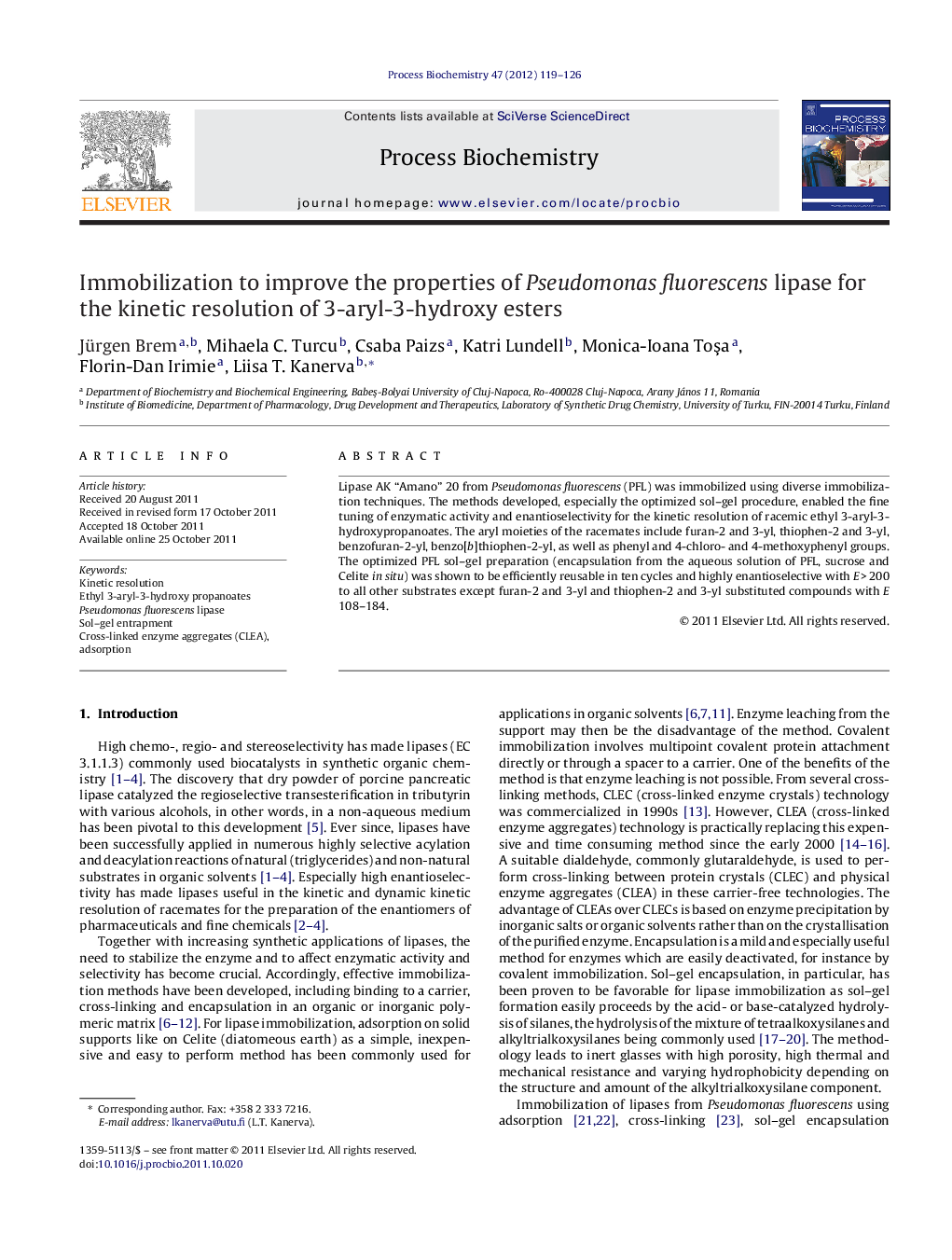| Article ID | Journal | Published Year | Pages | File Type |
|---|---|---|---|---|
| 34686 | Process Biochemistry | 2012 | 8 Pages |
Lipase AK “Amano” 20 from Pseudomonas fluorescens (PFL) was immobilized using diverse immobilization techniques. The methods developed, especially the optimized sol–gel procedure, enabled the fine tuning of enzymatic activity and enantioselectivity for the kinetic resolution of racemic ethyl 3-aryl-3-hydroxypropanoates. The aryl moieties of the racemates include furan-2 and 3-yl, thiophen-2 and 3-yl, benzofuran-2-yl, benzo[b]thiophen-2-yl, as well as phenyl and 4-chloro- and 4-methoxyphenyl groups. The optimized PFL sol–gel preparation (encapsulation from the aqueous solution of PFL, sucrose and Celite in situ) was shown to be efficiently reusable in ten cycles and highly enantioselective with E > 200 to all other substrates except furan-2 and 3-yl and thiophen-2 and 3-yl substituted compounds with E 108–184.
► Lipase AK (PFL) was immobilized by adsorption, CLEA technology and sol–gel encapsulation. ► Long-term stability and reuse experiments indicated the sol–gel preparations highly usable. ► The presence of sucrose and Celite in sol–gel encapsulation gave a new catalyst with excellent properties. ► Immobilized enzymes were applied in the kinetic resolution of several 3-aryl-3-hydroxypropanotes.
